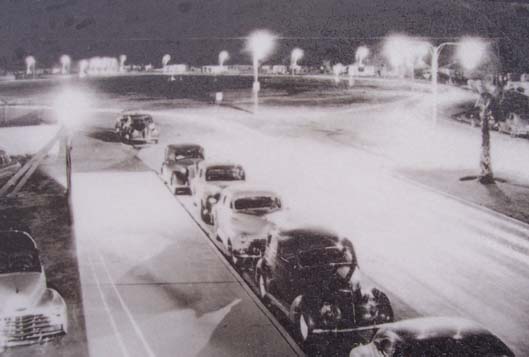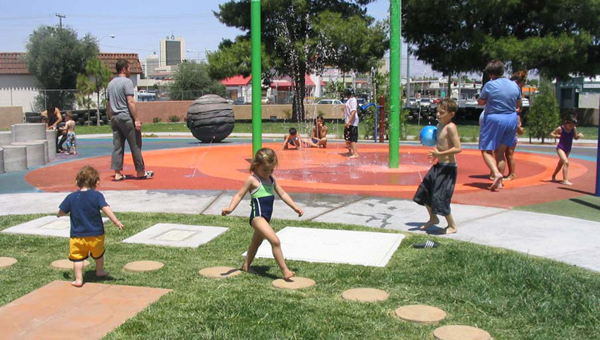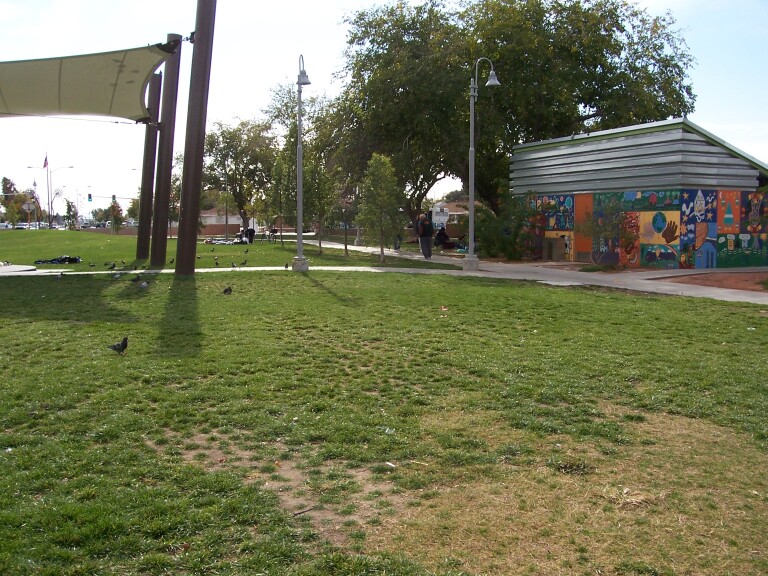Home » Literature Archives » The Other Side of Charity
THE OTHER SIDE OF CHARITY
by Ming Zhen Shakya
We are all moved by the plight of those who are less fortunate than we - particularly when we can meaningfully appreciate their loss. An old story comes to mind:
It was springtime and the park was filled with blossoming trees and flowers. People came from all around to stroll through the lanes and admire the scenery. Two blind beggars sat on opposite sides of the park, asking for alms. One man had a sign that read, "I am blind. Please help me." People passed him, but only a few tossed coins into his bowl. The other man received many donations. A few people even walked passed him, hesitated a moment, and then turned back to drop money into his dish. His sign read, "It is May and I am blind."
Empathy elevates us from most other creatures; and it often does so in record time. Instantaneously, we can feel what it's like to be in someone else's shoes and then respond as we would want others to respond to us were we the afflicted one. There is nothing intellectual about empathy. The question is simply, should there be? Should we construct a thought-protocol that will require us to examine an issue before we become emotionally involved in it? The answer is yes. Without this discipline we risk letting our charity degenerate into the maudlin sympathy of ego aggrandizement; and, by way of defending our ego, we immediately launch an attack against anyone who does not share our charitable concerns. There are few things more stultifying to spiritual development than inflating into an heroic prejudice in favor of those for whom we feel pity and an implacable antagonism towards those we regard as heartless.
Oscar Goodman, the mayor of Las Vegas, Nevada, has a strong esthetic sense. When taggers defaced the landscaped freeways, he proposed thumb amputation for convicted taggers, and although this was sort of tongue-in-cheek, he followed this rejected proposal with a plan to reinstitute the use of public stocks as punishment. A tagger would have his head and hands clamped securely on one side of the wooden plaque and folks whose walls were continuously being sprayed with gang signs and other murals, presumably would be free to spray paint both sides of the miscreant. Though this was obviously deemed "cruel and unusual" there was, everyone agreed, merit in the mayor's proposal. (He was re-elected with 86% of the vote.) His reaction to the homeless people who squatted in city parks gained him international notice. To discourage the squatting, he had sponsored a law - which was passed unanimously by the city council - that prohibited anyone from giving food to homeless people in our city parks. Money, however, could be given, and the homeless who lived on the streets or anywhere else could be given food. But no food to the park squatters. Of particular concern to him was Huntridge Park Circle.
The ACLU and other concerned people supported the folks who brought the homeless food every day. Through the ACLU's efforts, the law was declared unconstitutional. But internationally the furor continued. A check of Google revealed opinions that the mayor, being Jewish, obviously intended next to euthanize the homeless in nazi-style gas chambers. Because, as a lawyer, he had defended Italian-American persons of unsavory reputation, he was clearly an immoral Mafia mouthpiece. On and on the vitriolic criticisms went. Even our website received mail from fellow Buddhists who had heard about the controversy and wanted to cheer on the food givers and the homeless - and to condemn a beastly mayor and city council. Absent from all the vicious commentary was the slightest thought about why the Mayor proposed the ordinance in the first place.
Cities throughout the southwestern states have long been magnets for "snowbirds" who are drawn from colder, wetter climates during winter months. The more affluent maintain permanent residences; the average income folks lease economical motel suites or time-share condos. Persons of all income levels also drive south in mobile homes or campers, availing themselves of the many parking lots that offer utility hookups.
Because the Vegas Valley economy is thriving, people also come seeking jobs. Often, they arrive without enough money to purchase even temporary accommodations. They live in their cars - sometimes with their entire family, until they can get to know the city well enough to find the social services they need. Local governments and a variety of non-denominational as well as religion-specific organizations offer shelter - beds with clean sheets, and food- much of which is classy left-over food from the many hotels and restaurants. Medical treatment is also provided. Along with food and shelter, there are programs that offer free job training and placement, appropriate clothing to wear to work, and a legitimate "non-shelter" street address for a job applicant to use. There are shelters for those who need treatment for drug and alcohol addiction and there are daytime food banks. The largest U.S. Air Force base (46 km sq.) is located in the Vegas Valley, and so the area offers many veterans' assistance programs.
But there are other visitors who are not interested in these programs. They come by the thousands... usually by hitchhiking, to enjoy the warmth and recreation. They live in cardboard tents under bridges, along streets and highways, in alleys, vacant lots and parks - especially Huntridge Circle Park - particularly since some good Samaritans have undertaken the responsibility of regularly bringing meals to them there. Many of these homeless persons are ill with serious communicable diseases and many have criminal records
So why is the mayor being vilified for wanting to arrest the people who make these food deliveries? First, it should be noted that the City of Las Vegas is a small part of the Vegas Valley. While it does have its casinos and hotels, the famous Strip and other huge residential developments are in County jurisdiction. Other large municipalities such as North Las Vegas and Henderson also blend into city limits but are entirely separate political entities.
 Photo credit: Las Vegas City Archives
Photo credit: Las Vegas City Archives
Huntridge Circle Park is in an old section of the city. Here is what it looked like when, in the 1940s, street lights were placed around it. As can be seen in the photo, it is a large, grassy, but otherwise ordinary traffic circle. Since entrance to the circle was controlled by traffic lights, many residents, especially those who lived in apartments, used the circle as a kids' play ground or as just a place to lie on the grass and read. It had no water fountain or toilet facilities but it was a valued part of the community.
 Photo Credit: http://www.library.unlv.edu/arch/aia/
Photo Credit: http://www.library.unlv.edu/arch/aia/awa2004/ud03024.html
In 2003, Mayor Goodman decided to make it more "user friendly." Carpenter Sellers Associates, architects, designed the traffic circle into a new award-winning park. By 2004 Huntridge Circle Park had landscapinng, toilet facilities, drinking water, awnings for shade, play equipment for the kids, and even a maze for meditation. Everyone loved the beautiful island playground - as is evident in this 2004 photo
And then, by its first winter, Huntridge Circle Park became a meeting place for those homeless people who were not interested in jobs or living in homeless shelters. Numerous interviews revealed their motives: they refused to accept the rules imposed on them by the shelters; they could not use alcohol and drugs; they were required to clean the facility and help with the laundry; they could not engage in sexual activites; and they were "encouraged" to attend services in many of the religious shelters. Some shelters even made it a condition that residents actively seek a job.
 Photo: Ming Zhen Shakya 11-25-06
Photo: Ming Zhen Shakya 11-25-06
Immediately there were reports of kids being molested in the toilet facility; of picking up used condoms and syringes; of witnessing drunken men and women fighting, having sex, vomiting, and even urinating and defecating on the grass. Using language that only generously could be called obscene, the kids were told stay away. Adults who investigated were accosted by the squatters who had assumed proprietary rights over the park. (When I took photographs on a recent sunny Saturday afternoon, one homeless woman who was far in the background, charged at me cursing and demanding that I cease photographing her. Several of her companions restrained her. Notice the complete absence of children or ordinary adults. It was late afternoon and a nearby Pub's "Happy Hour" had attracted most of the Park dwellers.)
Although these visitors are all homeless, they are not necessarily all penniless. Many receive checks at the general delivery window of the post office. Some are "Remittance Men" - paid by their family to stay away from home, some collect Social Security checks, others are recipients of monthly government support programs.. Also, some who receive prescription medications frequently sell them to drug dealers. Regardless of its source, their money goes quickly: they are easy victims of theft - the causes of many of their fights, and some become thieves, robbing nearby homes and mugging citizens. (Christ Church, four block away, was broken into and looted four times in one year and finally had to have security bars installed over its stained glass windows.)
When the ordinance against supplying them with food went into effect, the homeless dispersed. The crime rate in the areas around the park fell dramatically. Since the ACLU got the courts to nullify the law, the homeless and the feeders are back, and so is the high crime rate.
Those who instantaneously champion the rights of these homeless folks unrealistically assume that they can put themselves in their shoes; but empathy cannot be experienced by a sane person who is trying to connect psychologically with someone who isn't rational. It is difficult enough even for a very healthy or prosperous person to see the world through the eyes of someone who is chronically ill or impoverished.
We see a similar ego-driven dynamic in Buddhist chat lines. One person writes in referencing a topic that is specifically within his form of Buddhism. We all know that our religion takes many forms, yet the responses to his reference begin by correcting the "false assumption" he has made regarding "basic Buddhist truth." The comments grow more insulting not only to him but to those who have supported him. And inevitably the nastiest and most sarcastic - but of course anonymous - exchanges follow as each correspondent seeks to establish his heroic "voice of authority" on "our religion." The fantasy hero is the contributor who assumes the duty to defend the purity of his beliefs. The fantasy enemy is anyone who disagrees with him. And all this occurs between people who know at the outset that there are many forms of Buddhism. But those whose emotional involvement is immediate, simply do not think. They cannot resist the impulse to react.
The doctor who pronounces a veteran sick is not belittling him. It would be ludicrous to denigrate the physician, saying that by making such a diagnosis he shows no pity or gratitude to a man who served his country in time of war and, further, that if it had not been for the sacrifices of the man, the doctor would not now enjoy such a good life. But this is precisely the attitude of a thoughtless, quick to inflate, emotional reaction.
I recall as a child a cluster of fifty or so ominous state buildings given the euphemistic name of Byberry Hospital. Everyone knew the buildings were for "the insane." Any citizen who went over the edge mentally or was an "odd vagrant" or formally declared to be criminally insane, found himself carted off to Byberry. There were virtually no pharmaceutical solutions to mental disease or distress in those days. The violent were physically restrained, the rest wandered about in various stages of dementia. Dr. Freud's prolonged psychotherapy was hardly suitable for the horde that kept the dilapidated buildings bulging at their fetid seams.
Especially since the insane were impossible to supervise, the turnover rate of employees was staggering. There was a limit to how much care a worker could give patients who would routinely fight, steal, rant, and engage in sexual activities even when the sexes were separated. Every day a few patients would take their clothes off and stuff them into toilets to clog them and cause the sewage to overflow - while continuing to use the flooded facilities. I remember my mother sympathizing with one hospital worker who nearly had a nervous breakdown trying to care for them. (For details on the conditions at Byberry, consult Google.)
When WWII ended, many soldiers returned to civilian life needing psychiatric treatment. Not much was done to help them until, In 1949, the case of Howard Unruh, a decorated soldier whose mental condition had steadily deteriorated since the end of the war, spurred the needed action. Unruh got up one morning and, convinced he was surrounded by enemies, went out and shot 26 people, killing 13 of them. New attention was given to treatment. In the early 1950s we had a few drugs, such as Reserpine and Miltown, which were followed by a deluge of psycho-therapeutic medications. As more and more patients were able to function at home with their prescriptions, the need for such wretched asylums ended. Byberry was steadily dismantled as were hundreds of other state asylums around the country
Certain mental disorders - schizophrenia, manic-depression, and paranoid psychosis, did not always respond to medication. Drug and alcohol addiction additionally required the strong desire of the patient to be cured; and an assortment of mysterious brain disorders proved untreatable. Since the public asylums had been closed, it remained for private hospitals to care for those who could afford the care. But for the impoverished, there was little help. Such facilities as there were for veterans sheltered a patient for a given period of time, usually long enough to prescribe a reasonably suitable medication for the war-created disorder. But often, prior to treatment, the patient had already destroyed his home environment; and without family support, the medications went untaken, and it was back to a homeless Square One.
Instead of an indoor facility like Byberry, bridges, sidewalks, and parks became the asylums - just as they are today. So bereft is the nation of public mental facilities that most mentally ill persons who are convicted of a crime are usually warehoused in state prisons - where a kid who's doing time for stealing a car is often at the mercy of an irrationally violent inmate. It is no longer a simple matter of committing the mentally ill to a public institution. The patient's civil right to be free in his insanity is invariably the greater right.
No one should charge, as someone did in one of the Google entries, that Las Vegas gambling creates homeless people who are then ruthlessly starved. The homeless in question are not native: they have come from states who obviously did not give them the care they required. Further, most states have lotteries, Indian Casinos, horse racing, and other forms of gambling. No one has to come to Las Vegas to lose money on games of chance. Vilifying a mayor or a community that is trying to do the right thing for both the homeless and the citizens who have unfairly born the burden of their conditions is not entirely just
A priest in our Sangha who lives in an apartment near center city jogs every morning through the streets. Many other business and professional men also jog, and, as is the way of those who have similar pursuits, they got to know each other. Seeing the homeless - single men sleeping in doorways and single moms with children living in cars, our priest, Fa Li Shakya, founded the Zen Men's Running Ministry; and soon the joggers organized to deliver breakfast to the needy on their running routes. They would take the time to talk to the people, and learning of their needs, would suggest an appropriate support facility for them. This is the sane and humane way to give a helping hand to those who are down on their luck. But encouraging homeless people, some of whom may be drug addicts, sociopaths, or victims of serious mental disorders, to remain in a residential area where, incapable of controlling themselves, they may break into a home or confront a child for purposes they do not quite comprehend, is itself a form of psychological distress.
Mayor Goodman prefers to have the homeless placed in some kind of assisted living facilities in which their afflictions could be treated, rather than let them succumb to worse disease or crime, and end up being incarcerated in State prison. If they could think clearly, they would prefer it too.
Post Script: Just as I finished writing this, Huntridge Circle Park was officially closed. Yesterday (11/26/06) one homeless man murdered another in the Park. The city said that this was "the last straw." The $1.6 million dollar renovated park now is circled with yellow crime scene tape.

